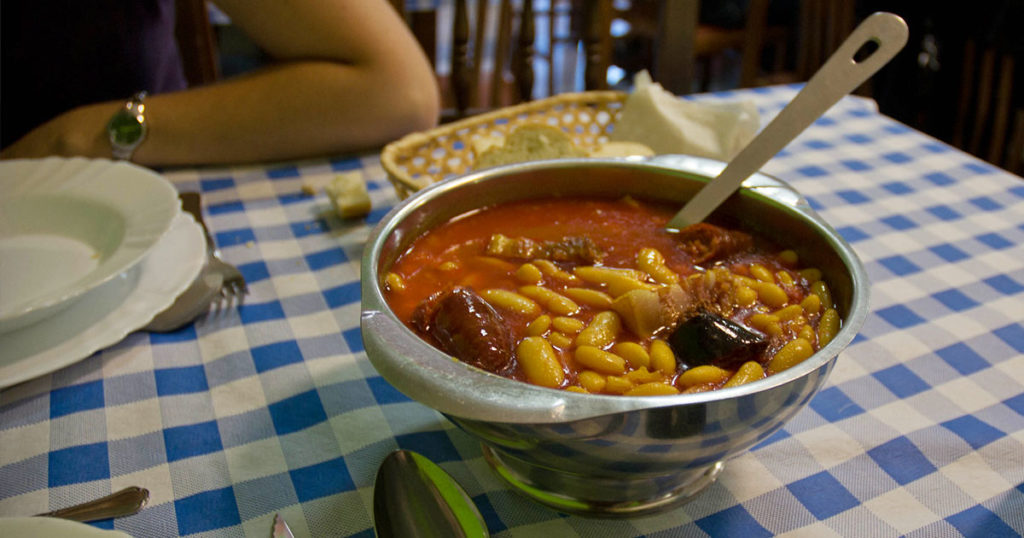
Comer de cuchara means “eat with a spoon” and refers to meals that are served in a bowl. Fabada, the Asturian stew of beans and sausage, bacalao con garbanzos y espinacas, which is salted codfish with chickpeas and spinach and is traditional during Lent, and pote, bean, potato, and kale stew, are favorite examples of mine. But there are so many more. Marmitako, a Basque recipe with potato and tuna, is a new favorite, and pisto, thinly sliced zucchini sautéed with onion, green pepper, and tomato, is an old standby for me. With olive oil and paprika, you can’t go far wrong with any of these dishes: they are never anything but delicious. To have them at a friend’s house is to be comforted that tradition lives on. If you order the menu del día in a restaurant, the fixed price meal, you will surely find a hearty soup or stew among the choices. So far so good. But a plate of fabada is the starter: you will also choose a second course, a dish of meat, fish, or chicken. With dessert to follow. You don’t get up hungry.
If, on the other hand, you are not a big eater but do like to nibble at various dishes, a cider bar is a good choice for a meal where you can picar, meaning order finger food, which is brought to the table and set in the middle so everyone can partake at their leisure of whatever dish appeals to them. Today makes a break between the excesses of yesterday’s holiday, Día de la Constitución Española, and those of tomorrow’s, Día de la Inmaculada Concepción. But to join friends and family in a lively meal, any excuse will do. Though my fridge was full of food, when my brother visited in October, three dishes made a robust meal for my mother, my brother, and me at a cider bar in the town’s principle plaza, Plaza les Campes. We ordered croquettes, stuffed onions, and a kind of scallop pâté called paté de zamburiña. You’ll like it, we told my mother, and she did.
I’d had this kind of scallop before, but not often, and when I looked them up later on the Internet, I found them identified as queen scallops and touted as an exquisite shellfish with “a full flavor and texture of great quality.” One cares about the exuberance in a hug, and the grip when shaking someone’s hand, and the texture of food in one’s mouth. The feel of a thing. But to see texture put on a par with flavor suddenly brought home to me the horror of eating, of sinking teeth into flesh, grinding. And yet, a pâté, where all the grinding has been done and the creature turned to pulp, is horrifying too. I thought of the nutritional drinks developed as a substitute for eating, where a meal is a glass of a thick, tan liquid, easy to pour, to consume, and to clean up. No fuss, no mess. No lost time. Back to work. The businesslike dullness and efficiency of drinking your food does not appeal. What would be a happy compromise between tearing your food from the bone and eating what seems essentially formula for adults? Comer de cuchara, half sauce, half not. And substantial and comforting, even to someone from a different tradition.


